Have you ever wanted to create a raised garden bed in your backyard, but wondered what material to use for the lining? It can be confusing to determine the right type of lining for your raised garden beds, as there are so many options available. But don’t worry! This essential guide will provide you with all the information you need to successfully line your garden bed – from the pros and cons of each option to tips for maintaining it over time. Get ready to learn everything you need to know about lining a raised garden bed!
What are raised garden beds?
Raised garden beds are an effective way to maximize space and create a unique garden of your own. They allow for better soil drainage, weed control, and improved soil quality. Raised garden beds also make gardening easier as they can be built at any height. By elevating the plants above their traditional ground-level counterparts, you can help ensure that all your plants have enough access to sunlight and air circulation while creating defined pathways for easy harvesting.
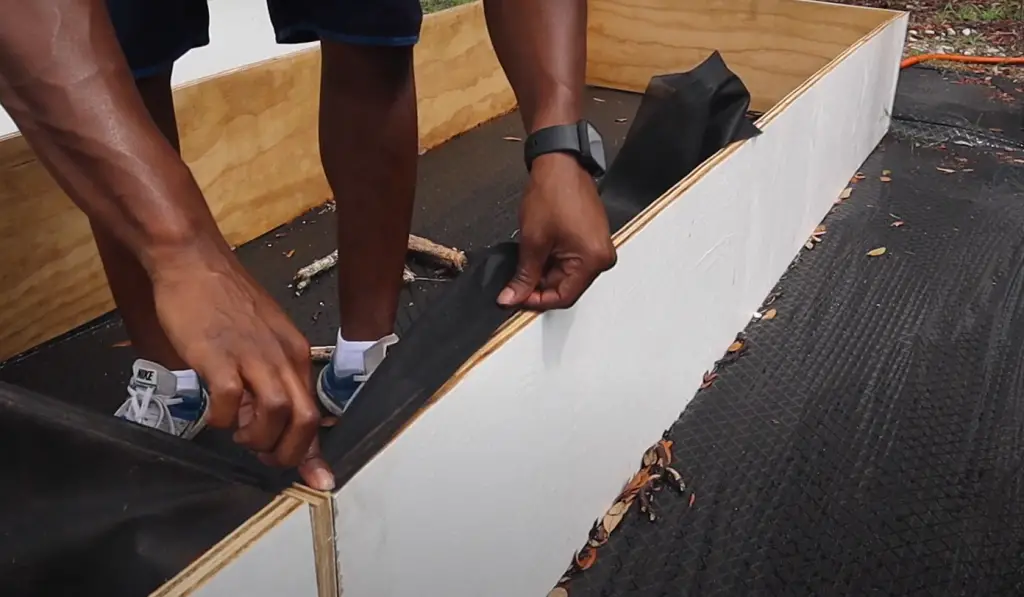
Additionally, raised garden beds provide an opportunity for creative planting designs with various heights and shapes available. Whether it’s square or circular, there is a style of raised bed to suit everyone’s needs. With so many benefits to offer the gardener, raised garden beds are quickly becoming the new norm for cultivating vegetables and flowers.
How to Build a Raised Garden Bed
Building a raised garden bed is an easy project that can be completed in a few hours with basic tools. The first step when building any raised garden bed is to choose the right location. Select an area that gets at least six hours of direct sunlight per day and make sure it’s not near trees or other obstacles that may shade the bed from needed sunlight. Additionally, select a spot at least four feet away from your home as this will help prevent pests and diseases from entering your house.
Once you have chosen the perfect spot, decide on what type of wood you would like to use for the frame of your raised garden bed.
Be sure to choose untreated wood that won’t release dangerous chemicals into your garden.Next, measure and mark out the dimensions of your raised garden bed on the ground with stakes and string. When measuring for length and width keep in mind that the larger the area, the more soil it will require. Once you have marked off the space with stakes and string, begin assembling the frame using either screws or nails. Make sure each corner is well secured before filling it with soil.
Finally, fill your raised garden bed with rich soil that has been amended with compost or manure. The soil should be slightly moist, but not soggy. Once the bed is filled you can begin planting your vegetables or flowers. Now that your raised garden bed is complete, it’s time to sit back and enjoy watching your plants grow [1]!
What Do You Use To Line A Raised Garden Bed?
Using Landscape Fabric As A Raised Bed Liner
One of the most common materials used to line a raised garden bed is landscape fabric. Landscape fabric is usually made of a heavy-duty plastic or polyester material and comes in large rolls that can be cut to fit any size garden bed. The fabric helps prevent weeds from invading your garden, as well as providing an extra layer of protection against soil erosion. It also helps keep moisture locked in the soil so that plants have access to water without having to compete with weeds for it.
Using Rocks As A Raised Bed Liner
Rocks can also be used as a liner for raised beds. This is especially helpful if you are growing vegetables and want to avoid potential contamination from chemicals or other substances found in soils or synthetic fabrics. Rocks also help retain moisture, protect the soil from erosion, and provide a barrier against weeds. Depending on the type of rock you choose, it can add some extra texture and color to your garden as well.
Using Cardboard As A Raised Bed Liner
Cardboard is another inexpensive option for lining raised beds. It’s easy to cut into any size or shape and will keep weeds out while providing an extra layer of protection against soil erosion.
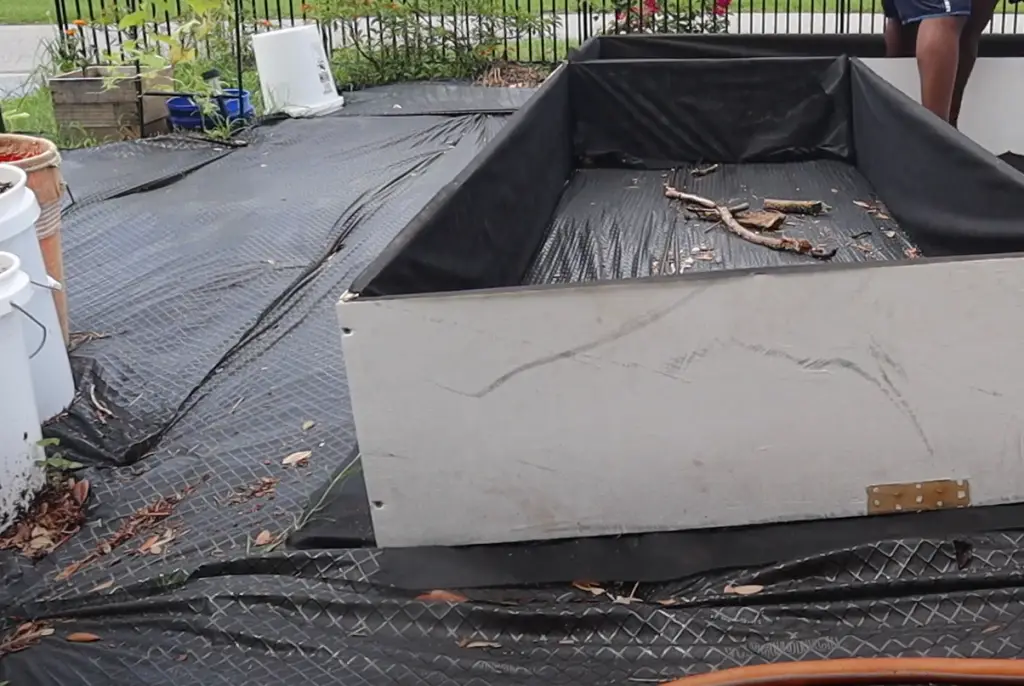
Cardboard is not usually suggested if you plan to grow vegetables in your raised bed because there may be chemicals within the cardboard that could contaminate the soil and plants. However, it may be sufficient in certain situations such as a flower bed or herb garden where contamination isn’t as much of a concern.
Using Mulch As A Raised Bed Liner
Mulch is another popular option for lining raised beds. It helps retain moisture, protect the soil from erosion, and keep weeds at bay.
Depending on what type of plants you are growing in your garden bed, you may want to choose a specific type of mulch that will provide the best environment for growth.Using Canvas As A Raised Bed Liner
Canvas is an increasingly popular option for lining raised beds. It’s a heavy fabric that provides a barrier against weeds, helps retain moisture, and protects the soil from erosion. Canvas is usually treated with a waterproofing agent so it can withstand different types of weather conditions. It’s usually more expensive than other options but may be worth the investment if you want to extend the life of your garden bed and protect your plants from extreme temperatures or harsh weather conditions.
Using Plastic As A Raised Bed Liner
Plastic can be used to line a raised bed. It’s an inexpensive option but it doesn’t offer the same protection against weeds as other materials and isn’t as effective at retaining moisture or protecting the soil from erosion. Plastic is also prone to cracking over time so you may want to opt for another material if you plan on having your garden bed for a long period.
Using Hardware Cloth As A Raised Bed Liner
Hardware cloth is a type of metal mesh that can be used to line raised beds. It provides an effective barrier against weeds and helps retain moisture in the soil while also protecting it from erosion.

Hardware cloth is more expensive than other materials but can last for a long time if taken care of properly [2].
Benefits Of Lining A Raised Garden Bed
Raised Bed Liners Insulate Soil Against Extreme Temperatures
Raised bed liners allow you to create a microclimate for your plants, protecting them from extreme temperatures. The liner can provide an insulating layer between the soil and the air, helping keep the temperature of the soil more consistent in both summer and winter. This is especially beneficial in areas with large fluctuations in temperature throughout the year.
Raised Beds Allow You To Plant In Difficult Soil Conditions
The liner creates an artificial barrier against whatever type of soil or terrain lies beneath it, allowing you to control not just what’s in your garden bed but also how deep your beds are. That means if you have rocky or clay-like soil conditions making traditional gardening challenging, raised bed liners make it easy to plant and cultivate a thriving garden.
Liners Make Maintenance Easier
Raised bed liners also make it easier to maintain your raised beds over time. The liner acts as an effective barrier against weeds from entering the soil and competing with the plants in your garden bed for resources. It’s also much simpler to replace layers of soil or add fertilizer when you have a liner, as it can be easily removed without disturbing the underlying soil. This makes maintenance tasks like aerating, tilling, and replacing soil much simpler than traditional gardening methods.
Easy To Clean And Disinfect Raised Bed Liners
Raised bed liners are incredibly easy to clean and disinfect thanks to their flat surfaces and uniform depth. Simply spray them down with a hose and add a disinfectant of your choice to prevent the spread of disease between plants. This makes them ideal for growing vegetables as they are easy to keep clean, preventing possible contamination from entering your food supply.
Raised Bed Liners Keep Pests Out
The liner acts as an effective barrier against a variety of different pests, including burrowing rodents like voles and moles.

The smooth surface of the liner makes it difficult for pests to gain access to your garden bed, ensuring that they remain unable to feast on your plants. It also helps reduce soil compaction, another common problem associated with traditional gardening methods.
Raised Bed Liners Retain Soil While Allowing Water To Drain Away
The raised bed liner acts as a barrier between the soil and any other material used to line the garden bed. This allows for better drainage while still retaining moisture, meaning your plants will have access to both water and air without becoming waterlogged. The liner also helps retain nutrients in the soil, allowing your plants to benefit from them over time.
Raised Bed Liners Prevent Leaching Of Chemicals Into Soil
Raised bed liners also prevent chemicals, such as fertilizer or herbicides, from leaching into the soil. This prevents any potential contamination of your food supply and ensures that your garden remains safe and healthy for both you and the environment. These liners can also be used to help control pests without the need for harsh chemicals or pesticides [3].
Drawbacks Of Lining A Raised Garden Bed
Raised Bed Liners May Not Allow Adequate Drainage
One of the drawbacks of lining a raised garden bed is that it may not allow adequate drainage. This can be an issue when water accumulates in the bottom of the bed, leading to soggy soil and plant roots that are unable to properly access oxygen. Additionally, excess water can lead to mold growth on soil or plants, which can quickly become a major problem for gardeners.
Raised Bed Liners Can Be Expensive
Another drawback of using liners in raised beds is the expense associated with them. Depending on the type of liner used, costs can add up quickly as they need to be replaced over time due to wear and tear. Additionally, some types of liners may require special installation processes which could add to the cost.
Raised Bed Liners Can Trap Pests
The final drawback of lining a raised garden bed is that it can trap pests in the soil, leading to an infestation.
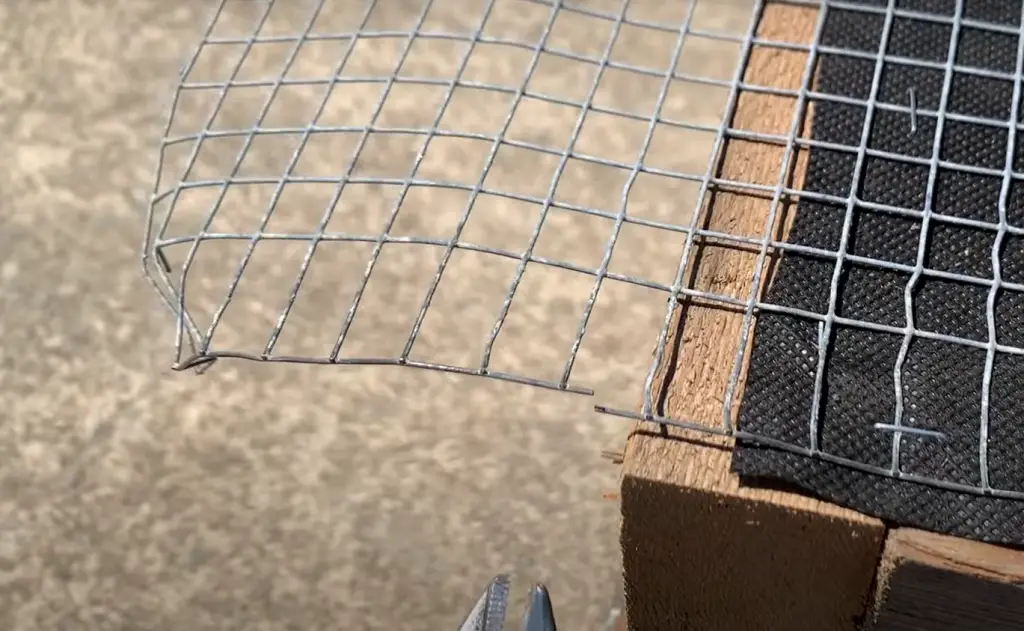
This can be especially problematic if the liner material does not allow for adequate air and moisture circulation, which can create ideal conditions for certain types of pests to thrive. Additionally, liners may make it difficult to access and treat pest problems once they have become established.
Raised Bed Liners Are Easily Damaged By Digging
Raised bed liners can be easily damaged by digging or other activities that involve using tools in the garden. This means that if you need to dig around the liner to plant or move plants, it could become punctured and need to be replaced. Additionally, if there are sharp objects or tools used in the garden they could potentially gouge or tear the liner material.
Raised Bed Liners Are Difficult To Replace
Raised bed liners are not easy to replace once they become damaged or worn out.
Additionally, any existing plants in the bed will have to be removed before the new liner can be installed.Raised Bed Liners Can Cause Wood To Rot Faster
Using liners in raised beds can cause wood to rot faster than it would otherwise. This is because the liner material traps moisture and prevents air from circulating the wood, which can lead to accelerated decay over time. Additionally, any water that accumulates inside the liner may seep into the wood and further accelerate its deterioration.
How to line a raised garden bed?
- Choose a location for your raised garden bed. Keep in mind that it should receive at least 6 hours of sunlight each day and be close to a water source.
- Add soil to the bed area, making sure to choose nutrient-rich soil or compost mixed with organic material like peat moss, manure, or composted leaves. Make sure the soil is level and firmly packed down before beginning the lining process.
- Line the sides of the raised bed with landscape fabric or weed barrier cloth. This helps keep weeds from growing within your raised garden bed as well as prevents erosion when you are filling it up with soil later on. Use metal staples or heavy rocks to secure the fabric to the sides of your bed.
- Cover the bottom of the raised garden bed with a layer of gravel or small stones. This helps prevent soil from washing away when you water your plants and also ensures good drainage.
- Fill up the raised bed with your chosen soil mixture, making sure to pack it down firmly so that it is level and even throughout the entire bed.
- Plant your desired vegetables, fruits, or flowers in the prepared soil and add a 2-3 inch layer of mulch on top for added protection against weeds and to help retain moisture in warmer climates.
- Water as needed and enjoy your garden!
How to maintain the raised beds?
Maintaining raised beds is an important part of ensuring your garden produces healthy plants and flowers. Here are some tips for keeping your raised bed in top condition:
- Water regularly – To ensure that your plants and flowers stay hydrated, water them at least once a week, or more often if necessary. Be sure to water the entire soil surface evenly.
- Mulch – Mulching helps retain moisture in the soil while also preventing weeds from growing in between your plants. Spread mulch around each plant to create a barrier against weeds and help keep water from evaporating too quickly.
- Fertilize – Fertilizing helps promote healthy growth and increases the nutrient content of the soil in your raised bed. Be sure to use a fertilizer specifically made for garden beds, as fertilizers meant for lawns may damage your plants.
- Prune – Pruning helps keep your plants healthy and promotes better growth. Regularly trim away dead or dying branches and stems from your plants, as well as any weeds that have managed to take root in the raised bed.
- Weed – Weeding is an essential part of maintaining a healthy garden bed. Pull out all weeds by hand, being careful not to disturb any of the roots of your plants when doing so. If needed, apply an organic weed killer to get rid of any persistent weeds.
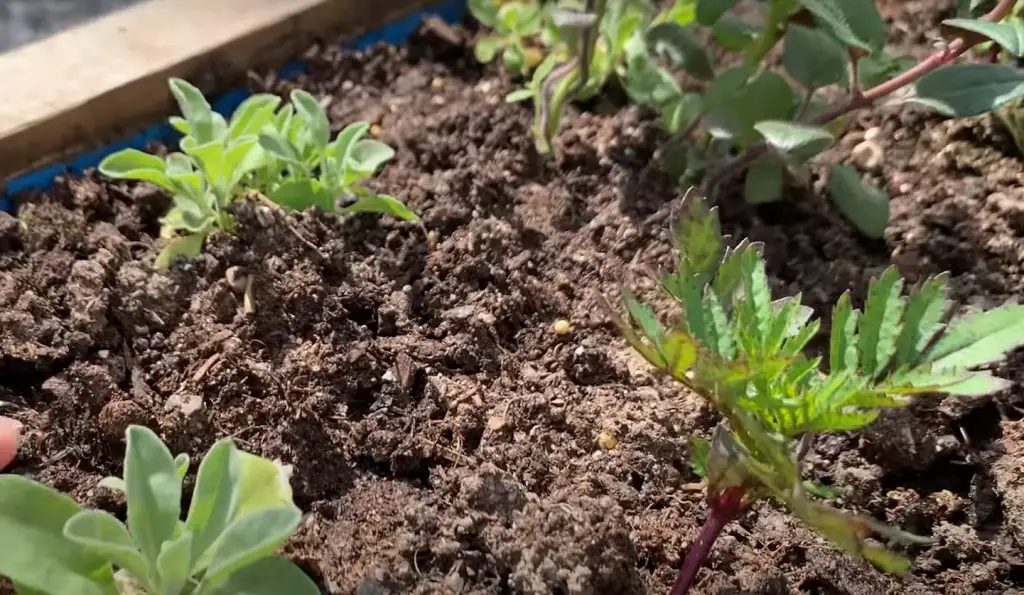
By following these tips you can ensure that your raised bed remains in excellent condition and produces healthy, vibrant plants.
FAQ
What is the best lining for raised beds?
The best lining for raised beds is a permeable geotextile fabric that is breathable and allows for water drainage. This type of material will help to keep the soil in place while also allowing for nutrients and air to get through, which are vital for healthy plant growth. It also helps to protect against pests and weeds from entering the bed, as well as preventing erosion of the soil over time due to heavy rain or runoff. Another good option is using a thin layer of mulch or compost on top of the lining, which can provide extra insulation and slow down water evaporation. With either choice, make sure that there are several inches between the lining/mulch and plants. This will give them enough room to grow.
What is the best soil for raised beds?
The best soil for raised beds should be a blend of organic materials, such as compost, peat moss, and aged manure. These ingredients will provide the necessary nutrients to help plants grow and develop strong root systems. Additionally, it’s important to amend the soil with some sort of slow-release fertilizer so that it can feed plants over time. Finally, adding sand or perlite to the mix can help improve drainage and air circulation in the bed. With these components added together, you have a winning combination for growing healthy plants in your raised bed garden!
How often should I water my raised bed?
When watering your raised bed garden, it is important to keep the soil moist but not soggy. The best way to determine when and how much to water is to check the soil every few days with your finger. If the top inch or two of the soil feels dry, then it’s time to add some water. How often you need to water will depend on a variety of factors such as weather, type of plants, and amount of sunlight in your garden, so it’s important to pay attention to the signs that tell you when more moisture is needed.
What type of mulch should I use for my raised bed?
Organic mulches are a great choice for your raised bed because they help retain moisture, suppress weeds, and improve soil structure. Some popular organic mulches include wood chips, straw, grass clippings, hay, and leaves. Be sure to choose a mulch that is free of weed seeds and disease and apply it at least 3-4 inches deep.
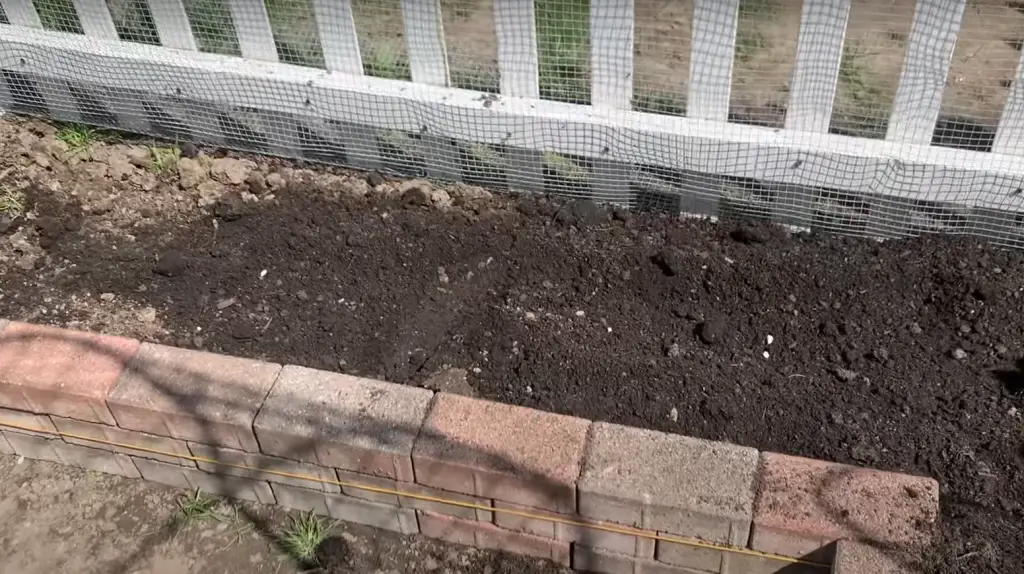
To prevent the mulch from washing away during heavy rains or watering, be sure to use enough so that it covers the surface of your bed completely. Additionally, check periodically for any signs of pests or diseases in the mulch and replace it as needed.
How do I keep weeds out of my raised bed?
Weeds can quickly take over in a raised bed if not managed properly! The best way to prevent them from taking root is by using an adequate amount of mulch on top of the soil. This will create a barrier that weeds won’t be able to penetrate. Additionally, hand-pulling any weeds that do appear is another effective way to keep your bed weed-free. Finally, make sure to rotate the crops in your garden each season and use crop covers or tarps when necessary to further discourage weed growth. With these steps taken, you can ensure that weeds stay out of your raised beds and don’t impede the growth of your plants!
What other tips should I keep in mind for maintaining my raised bed?
It is important to maintain the structure of your raised bed by regularly checking for signs of damage such as worn boards or supports, shifting soil, or cracks in the bed. Additionally, adding fresh soil and compost each season can help to keep the bed functioning optimally. Finally, it is important to pay attention to the plants that are growing in your raised bed and make sure that they have plenty of space for adequate root development. With these tips, you can ensure that your raised bed remains a productive place for growing healthy fruits, vegetables, and flowers!
Why do raised garden beds need a liner?
Raised garden beds need a liner to help retain moisture and prevent soil from washing away when watered. The liner can also help discourage weeds from growing in the bed and provide some extra insulation for the roots of the plants. Depending on your preference, you can choose from different types of liners such as plastic, fabric, or even landscape fabric. Be sure to place the liner around the edges of your bed before adding soil and plants so that it will be securely in place. With this step taken care of, you can look forward to having a beautiful raised bed garden!
What do you line the bottom of a raised garden bed?
When lining the bottom of a raised garden bed, you can use a variety of materials depending on your preference and budget. Landscape fabric or plastic sheeting are both popular choices as they help to retain moisture in the soil while also blocking weeds from growing. You may also choose to add gravel beneath the liner for extra drainage. Whichever material you select, make sure that it is securely attached around the edges of the bed before adding soil and plants so that it will stay in place. With this step taken care of, you’ll be able to enjoy having a successful raised bed garden!
Should I line my raised bed with cardboard?
Although cardboard can be used as a liner for raised beds, it is generally not recommended due to its tendency to break down quickly and become susceptible to weeds. For this reason, it is typically better to use other materials such as plastic sheeting or landscape fabric which will provide better protection against weeds and retain moisture in the soil. Whichever material you select, make sure that it is securely attached around the edges of the bed before adding soil and plants so that it will stay in place.
Should I line my raised garden bed with plastic?
Yes, plastic can be used in raised garden beds as a liner. It is an effective way to prevent weeds from taking root and also helps to retain moisture in the soil. You may choose to use clear plastic sheeting or black plastic film – both will work for this purpose.
Why should I line my raised bed with a weed barrier?
Using a weed barrier in your raised bed is important because it helps to prevent weeds from taking root and growing. By blocking off access to sunlight, the presence of a liner will discourage weed growth and keep them out of your bed. Additionally, some types of liners may help to retain moisture in the soil which is beneficial for plants that require high levels of moisture.
How to choose a liner for a raised bed?
When choosing a liner for your raised bed, it is important to consider the type of material that will work best in your climate and soil. For example, if you live in an area with high levels of moisture, it may be beneficial to choose a breathable fabric such as landscape fabric which can help with drainage and allow the soil to breathe. Alternatively, plastic sheeting or black plastic film can also provide effective protection against weeds while helping to retain moisture in the soil.
What are the benefits of lining a raised bed with fabric?
Using fabric to line a raised bed can be beneficial because it is breathable and allows air and water to pass through. This helps to promote better drainage and aeration which is important for healthy root growth.
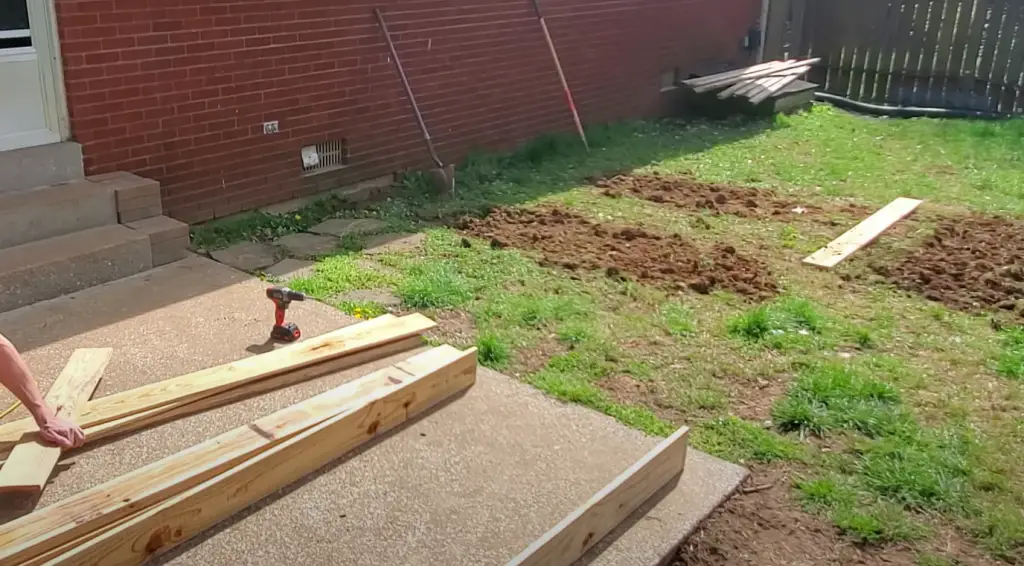
Additionally, fabric liners also help to retain moisture in the soil which is beneficial for plants that require higher levels of moisture. Overall, landscape fabric or other types of breathable fabrics can provide an effective barrier against weeds while also helping your plants stay well hydrated!
How to maintain a raised bed?
Maintaining a raised bed is relatively simple once it is properly set up. To start, add a layer of mulch to the top of the soil which will help retain moisture and protect the plants from extreme temperatures. Additionally, if you have used a weed barrier when lining your bed, make sure to inspect it periodically for any signs of wear or damage. Finally, be sure to water your plants regularly and fertilize them as needed according to their specific needs. With these steps taken care of, your raised bed garden should stay in great shape for years to come!
Useful Video: Should You Line a Raised Bed ??? Pros & Cons and Best Material ⏳⌚️⌛️ Garden Quickie #12
Conclusion
Lining a raised garden bed is a great way to maximize the growing potential of your garden. It helps retain moisture and also prevents weeds from invading unwanted areas of your garden. Lining materials can include plastic, wood chips, or even newspaper. Each material has its advantages and disadvantages, but ultimately it comes down to personal preference in terms of which one you select. The best part about lining a raised garden bed is that it’s easy to do and relatively inexpensive too! With some simple supplies and a bit of knowledge, anyone can line their own raised garden bed with ease. So don’t wait any longer – start planning out how you’ll line your raised garden bed today!
References:
- https://learn.eartheasy.com/guides/raised-garden-beds/
- https://www.homesandgardens.com/gardens/what-do-i-put-on-the-bottom-of-a-raised-garden-bed
- https://greenupside.com/should-you-line-a-raised-garden-bed-plus-what-to-use/





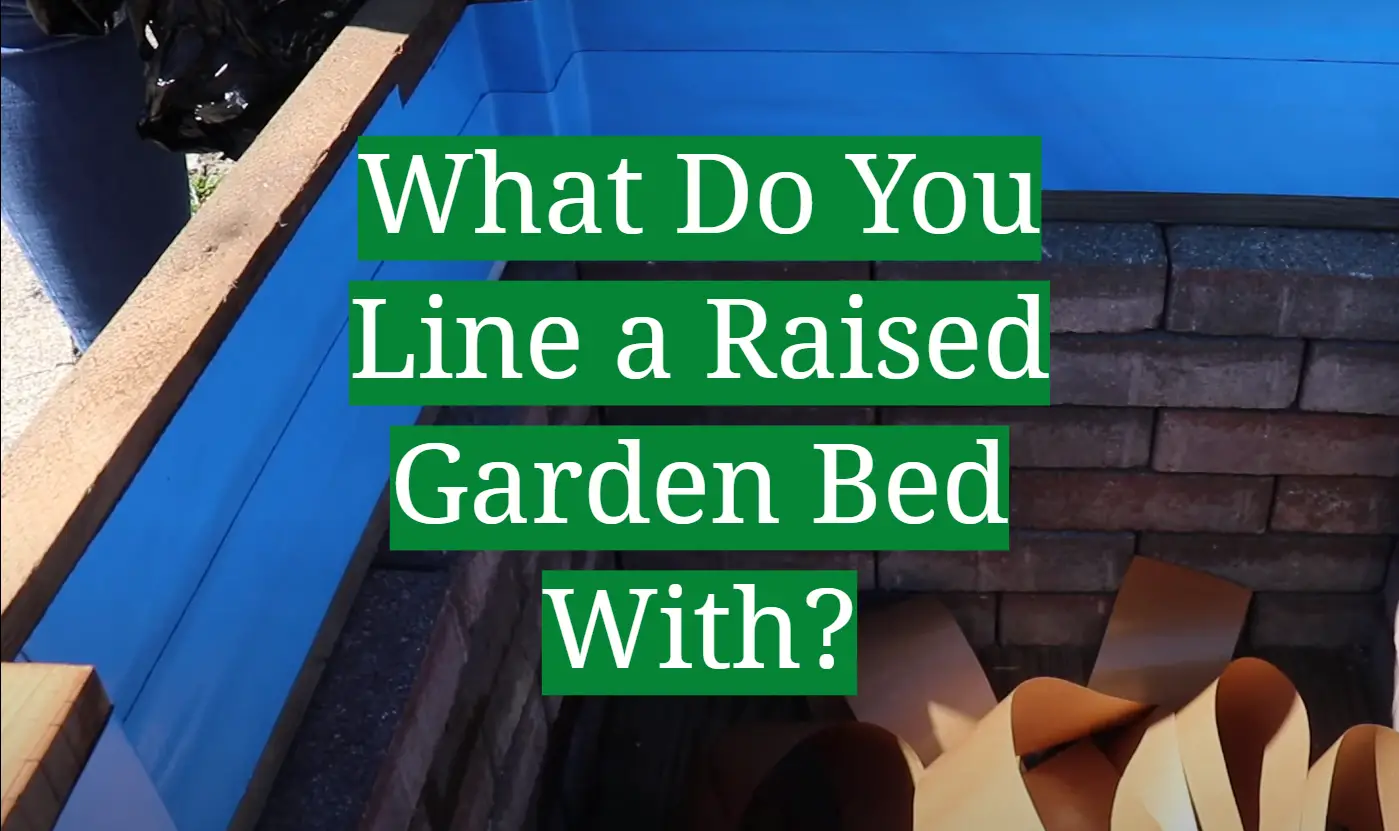




Leave a Reply
View Comments